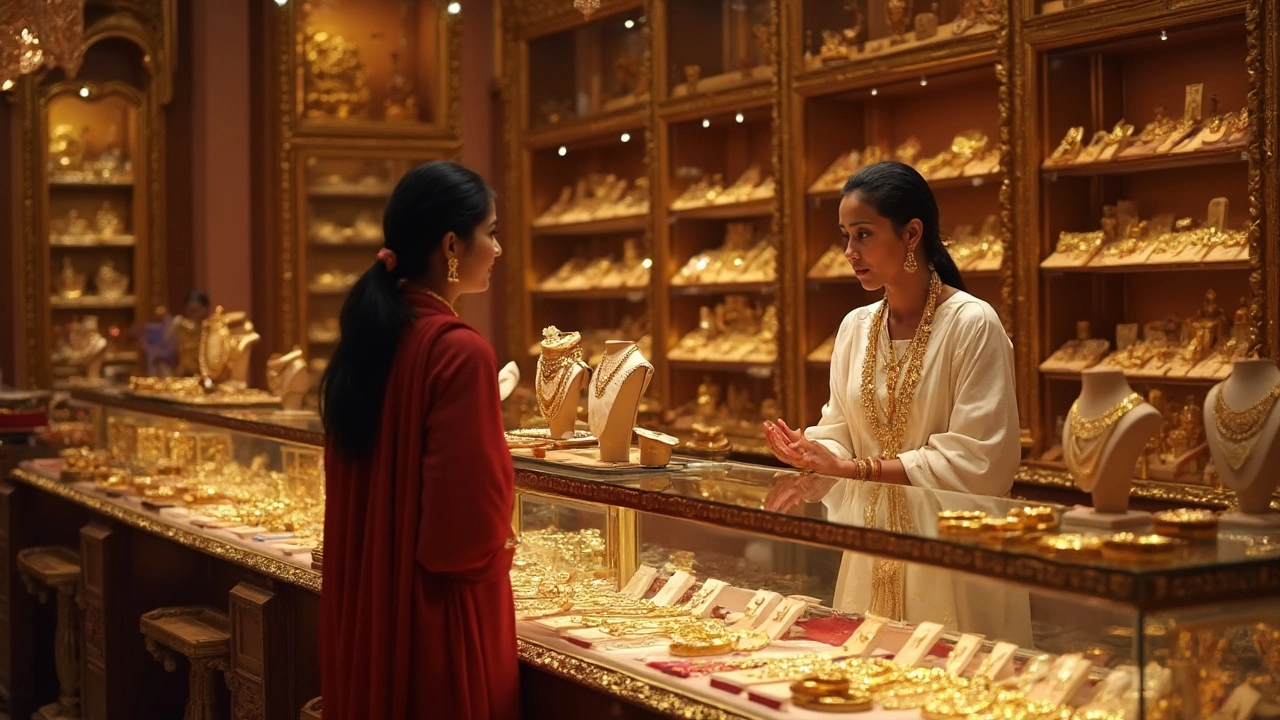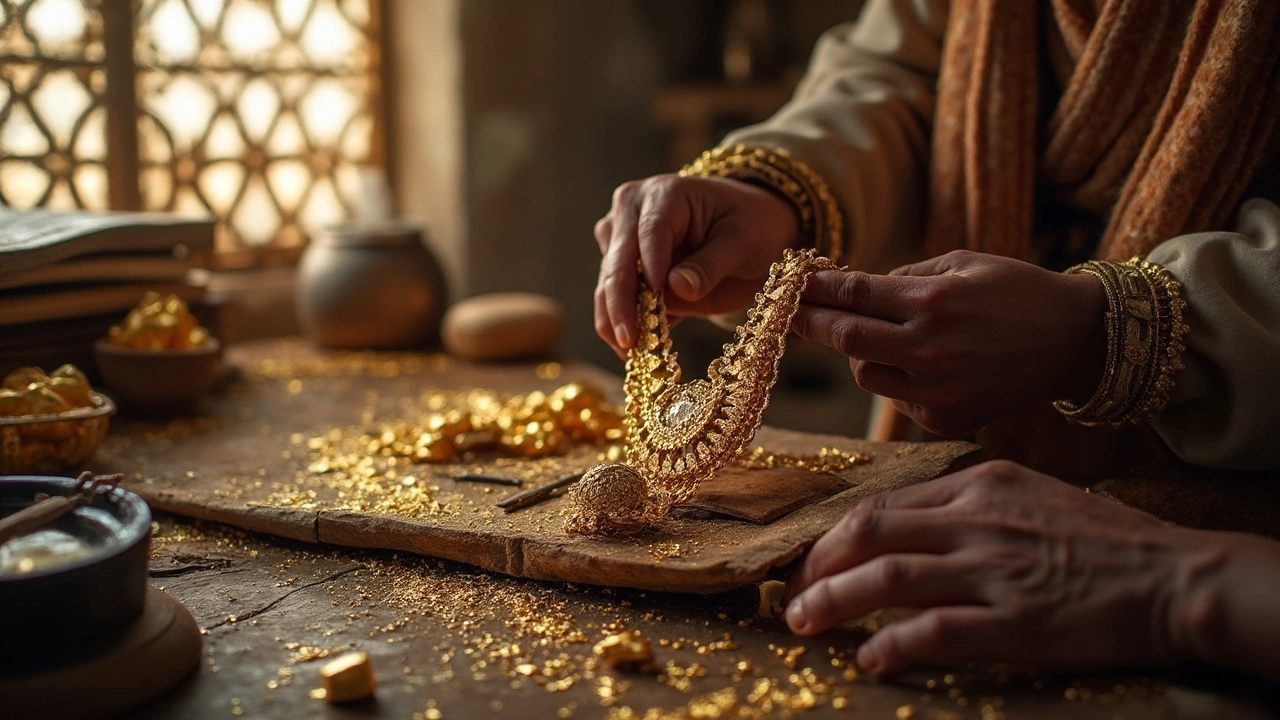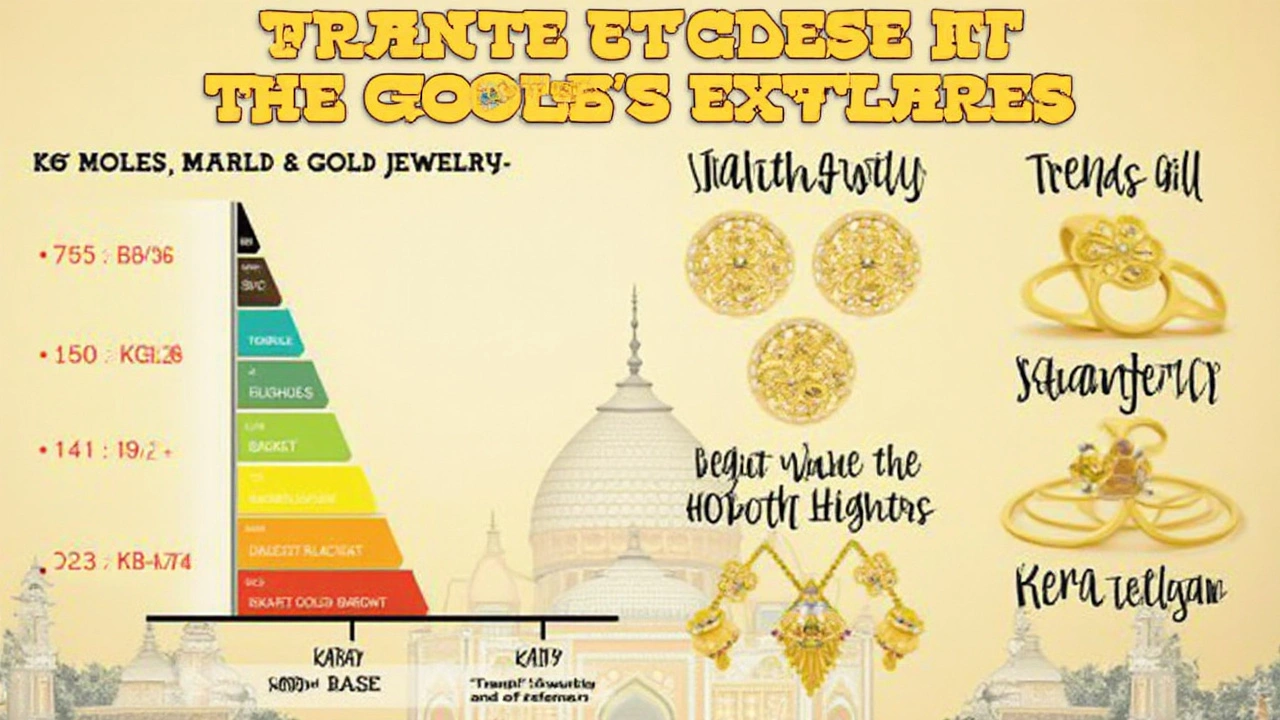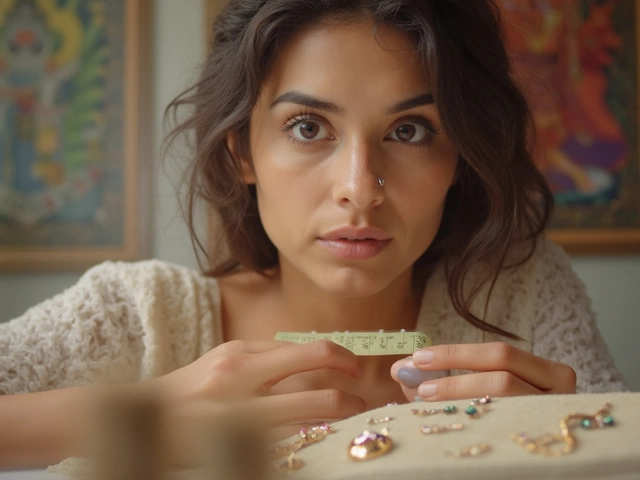
Alright, let's talk gold—the kind of gold that doesn't just look good but actually holds its value over time. Ever wondered what type to go for when you're picking out jewelry? It can be a bit tricky with all those karats and colors. But hey, that's what makes it fun, right?
First up, we've got to chat about karats. You know, that's the number stamped on your golden goodies like 14K or 18K. It's all about purity—higher karats mean more pure gold but also a bit softer. So, do they mean more value? Keep reading, and you'll find out how that shakes out.
- Understanding Gold Karats
- Exploring Gold Colors
- Trendy vs. Timeless Designs
- The Role of Craftsmanship
- Tips for Choosing Valuable Pieces
Understanding Gold Karats
Alright, so let's break down this whole karat thing. When it comes to gold value, karats are like the report card showing how pure the gold is in your jewelry. It's simple: the higher the karat, the more gold content there is. But there's a catch—higher karats also mean the gold is softer.
Let's dive in. The karat system measures gold purity on a scale from 0 to 24. So, 24K gold is pure gold—100% of that shiny goodness. Here's the catch though: it's super soft and not ideal for everyday wear because it'll scratch more easily. That’s why your grandma’s wedding ring probably isn’t 24K.
Most jewelry comes in 14K or 18K. So what does that mean? Well, 14K gold is about 58.3% pure gold and 41.7% other metals. This makes it more durable and often more affordable—nice combo, right? As for 18K gold, it's 75% pure gold, offering a good blend of durability and elegance. It’s popular in fine jewelry because it brings a rich color while still holding up over time.
Thinking about getting something with serious staying power? Here’s what you want to consider:
- Wear and Tear: Lower karats like 14K or 10K are tougher. Ideal for rings or bracelets you wear every day.
- Aesthetic Appeal: If you’re after stunning color that screams luxury, 18K and up are the way to go. Though, keep in mind the potential for nicks and scratches.
- Market Trends: Higher karat pieces often have higher market value, but only if they're kept in good shape.
Wondering about value? It's not just about the purity. Factors like craftsmanship, design, and even the demand for specific types play a part. Staying informed about these factors can help you make the best investment when choosing your next golden treasure.
Exploring Gold Colors
Gold isn't just about the shine; it's about the hue too—and trust me, color matters. You’ve got your basic gold shades, sure, but did you know that gold can come in a rainbow of colors? And each has its own value and style statement.
First off, let’s talk yellow gold. It's the classic choice, and its rich, warm tone is created by mixing pure gold with copper and zinc. When you think gold, you probably picture this shade, but its value depends a lot on those magic numbers—karats again, no surprise there.
Next, there's white gold, which is made by alloying gold with metals like palladium or nickel. It's then coated with a layer of rhodium to give it that shiny, silvery finish. If you're into the look of platinum but not the price, white gold is a great option. It's trendy and mixes well with those sparkly diamonds.
Rose gold is another popular pick, especially for engagement rings that stand out with a romantic, pinkish hue. This color comes from a mix of gold and copper. It's picking up a bit in value too, thanks to its unique and stylish look.
Consider this cool tidbit: the choice between these colors isn't just about style—it's about suitabililty too! Gold type can also impact how the jewelry holds up over time. White gold might require more frequent maintenance due to that rhodium plating, while yellow and rose gold are a bit more no-fuss.
Looking for a quick comparison? Check out this table:
| Gold Color | Main Alloy | Key Feature |
|---|---|---|
| Yellow | Copper, Zinc | Classic appearance |
| White | Nickel, Palladium | Platinum-like shine |
| Rose | Copper | Warm, unique tone |
When choosing your jewelry, think about your style and how much maintenance you're willing to put in. Whether you're going for classic, cool, or romantic, pick a color that not only fits your look but also retains its allure and value.

Trendy vs. Timeless Designs
When it comes to scheming about gold jewelry designs, we often face the age-old dilemma: trendy or timeless? Each has its perks, but their impacts on the gold value can differ a lot. Let's break it down so you can make a smart choice next time you're in the glitter aisle.
Trendy designs are like fashion's fleeting stars—they shine bright but might not last. Think about chunky Y2K-inspired chokers or those bold geometric rings that seem to be everywhere. They're eye-catching and can be fun to wear, but when trends shift, their value might drop along with their popularity.
On the flip side, timeless designs are the classics that never seem to age. Consider pieces like a simple gold chain, a pair of elegant gold hoops, or a traditional signet ring. These designs have a way of sticking around, and because they're always in style, they have a better chance of holding their value over time.
So how do you decide which route to take? Here's a simple rule: if you're in it for the long haul, aiming to preserve your jewelry’s worth, go for timeless. But if you want to make a statement or have some fun, go ahead and indulge in something trendy—but maybe not consider it a lasting investment.
Ultimately, finding that balance between trendy and timeless can give you the best of both worlds. You enjoy your jewelry now and hope for lasting value. You know, just in case your kids, like my kid Eamon, end up raiding your jewelry box someday.
The Role of Craftsmanship
So, you're eyeing that shiny piece of gold jewelry and wondering if it's worth your bucks. Well, craftsmanship is like the secret ingredient that can make one piece worth way more than another. It's not just about the gold itself; it's how that gold is shaped and put together.
Think about it—ever seen a piece that looks super detailed with intricate designs? That's no accident. It's the handiwork of skilled artisans who turn raw gold into masterpieces. These talented people can elevate a simple gold ring into something truly extraordinary. As jewelry expert Lisa Kramer once said, "The value of a piece lies in its creation, not just its materials."
When a piece is made by hand, you get unique artistry that machines just can't replicate. And get this—handmade jewelry often holds its value better over time because it's rarer, just like my kid’s drawings after art class (okay, maybe not exactly like those).
But let's not overlook the branded bling either. High-end brands often mean high-quality craftsmanship, even if machines are involved. They've got a reputation to maintain, so you know you're getting something reliable. But, of course, you’ll pay for that name.
Here’s a quick list of what to keep an eye on:
- Finish: How smooth is the surface? A smooth, polished finish is a good sign.
- Details: Are the details crisp and defined? That can show the jeweler's skill.
- Symmetry: This one’s huge. Is the piece balanced and even? If yes, that’s a plus.
- Setting: Check how firmly stones are set—nobody wants a missing gemstone!
So, while the gold itself is super important, don’t let it steal all the attention. Craftsmanship could be what turns a run-of-the-mill necklace into a family heirloom. Remember, a finely crafted piece of gold jewelry is like an investment you can wear!

Tips for Choosing Valuable Pieces
Choosing the right piece of gold jewelry that's going to hold its value can feel like finding a needle in a haystack, but with a few handy tips, you'll be a pro in no time. Let's break it down:
- Check the Karat: The first thing to look at is the karat. Higher karat gold, like 18K or 24K, usually means higher purity. But remember, higher purity also means the gold is softer, which isn't always ideal if you plan to wear it daily.
- Color Matters: Think beyond classic yellow gold. White and rose gold have their own appeal. White gold, for instance, is often alloyed with metals like palladium or silver, giving it attractive durability. The color should complement your style and preference—just know each has its resale market.
- Design Trends: Balancing trendy with timeless is key. What’s hot now might not be in a few years. Choose designs recognized as classics that never go out of style, like solitaire pendants or hoop earrings.
- Craftsmanship: High-quality workmanship can significantly add to value. Watch for minor details like secure clasps and smooth finishes. The extra craftsmanship cost could mean the piece maintains or increases its worth over time.
- Reputable Sellers: Always buy from trusted jewelers. Check for a hallmark stamp and official certifications. Reputable sellers will ensure you're getting genuine gold, avoiding any unfortunate surprises down the line.
If you're looking at gold jewelry as an investment, being informed on these points is essential. Whatever your preference, choosing based on gold value can make your purchase not only beautiful but also a smart financial move.




